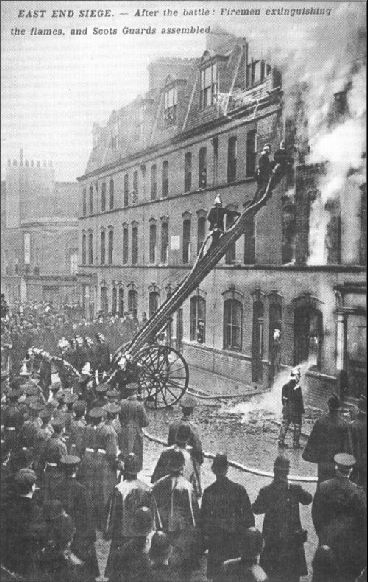|
This resulted in the arrival of 18 armed Scots Guards, whose regiment was currently carrying out guard duties at the Tower of London. More armed soldiers were dispatched to reinforce them later in the day.
As the morning stretched on and word of the confrontation spread, a large crowd grew to witness the unusual spectacle. They were joined by numerous high ranking members of the police force and 'important' civil officials, the most senior of whom was the Home Secretary, Mr Winston Churchill MP. He arrived late in the morning to take overall charge of the proceedings.
At around one o'clock, after a lengthy exchange of shots from both attacker and defender, smoke was seen issuing from an upper window. It quickly grew in intensity and a nearby street fire alarm was operated, drawing the London Fire Brigade into the proceedings. Their initial attendance was two pumps and an escape. On arrival the officer in charge quickly assessed the situation and sent back a message to the effect that a house of six rooms was well alight, and that shots were being exchanged between the occupants and the military. He also added the startling fact that the Brigade was not being allowed to extinguish the fire.
Within minutes of this disconcerting information being passed, the Officer of the Day, ADO Cyril Morris, set off in his car to take charge of the incident. At that time he had been in the London Fire Brigade for little more that two years and although this had proved fairly eventful, he was now to be confronted with a situation quite unlike anything he could possibly have imagined. He later became the capital's Chief Officer and gives a detailed account of his part in the siege in his memoirs published in 1939.
|
|

